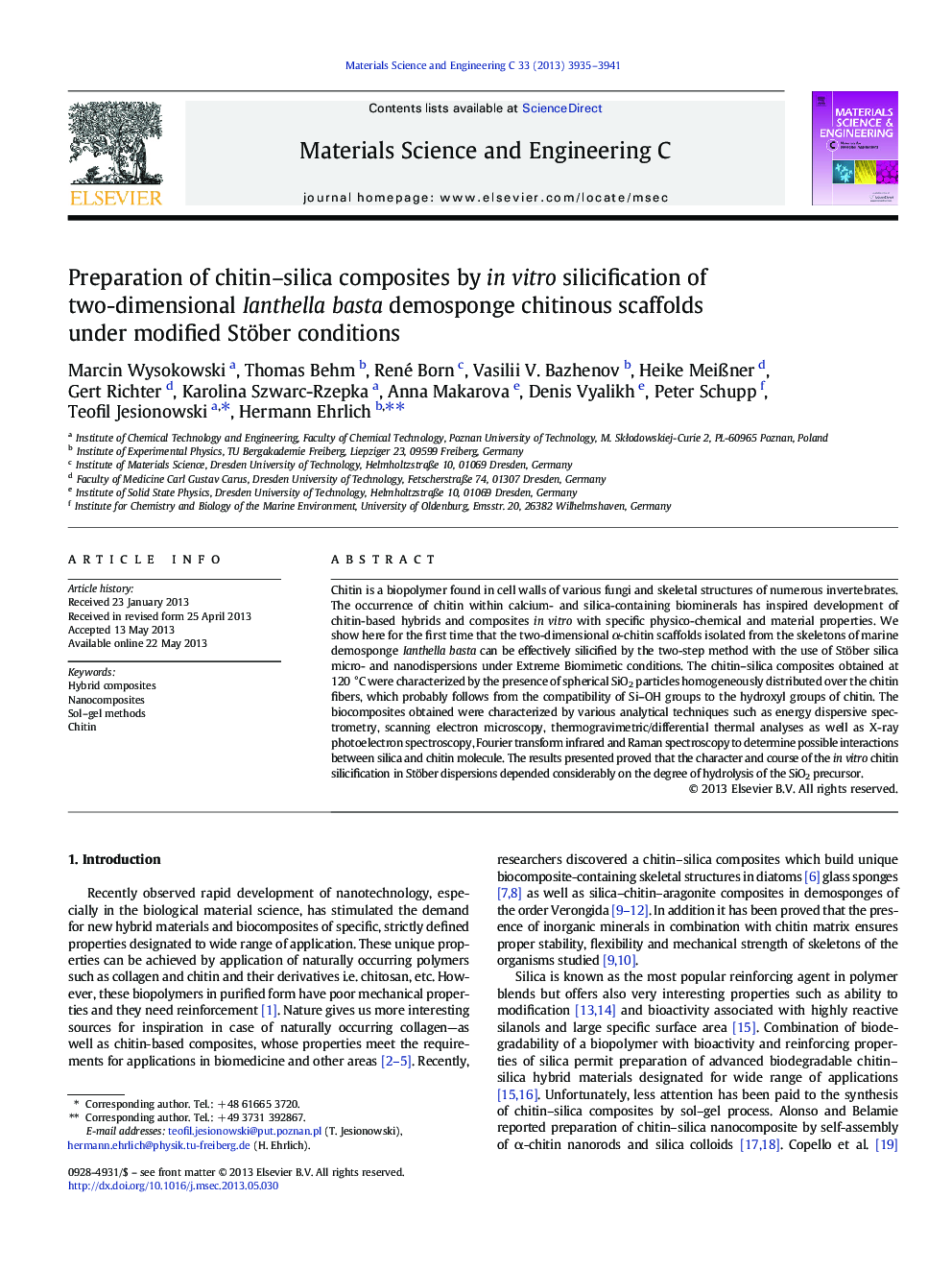| Article ID | Journal | Published Year | Pages | File Type |
|---|---|---|---|---|
| 10614572 | Materials Science and Engineering: C | 2013 | 7 Pages |
Abstract
Chitin is a biopolymer found in cell walls of various fungi and skeletal structures of numerous invertebrates. The occurrence of chitin within calcium- and silica-containing biominerals has inspired development of chitin-based hybrids and composites in vitro with specific physico-chemical and material properties. We show here for the first time that the two-dimensional α-chitin scaffolds isolated from the skeletons of marine demosponge Ianthella basta can be effectively silicified by the two-step method with the use of Stöber silica micro- and nanodispersions under Extreme Biomimetic conditions. The chitin-silica composites obtained at 120 °C were characterized by the presence of spherical SiO2 particles homogeneously distributed over the chitin fibers, which probably follows from the compatibility of Si-OH groups to the hydroxyl groups of chitin. The biocomposites obtained were characterized by various analytical techniques such as energy dispersive spectrometry, scanning electron microscopy, thermogravimetric/differential thermal analyses as well as X-ray photoelectron spectroscopy, Fourier transform infrared and Raman spectroscopy to determine possible interactions between silica and chitin molecule. The results presented proved that the character and course of the in vitro chitin silicification in Stöber dispersions depended considerably on the degree of hydrolysis of the SiO2 precursor.
Related Topics
Physical Sciences and Engineering
Materials Science
Biomaterials
Authors
Marcin Wysokowski, Thomas Behm, René Born, Vasilii V. Bazhenov, Heike MeiÃner, Gert Richter, Karolina Szwarc-Rzepka, Anna Makarova, Denis Vyalikh, Peter Schupp, Teofil Jesionowski, Hermann Ehrlich,
